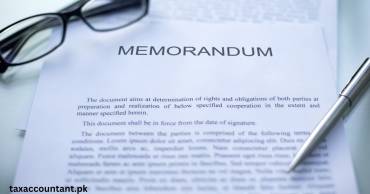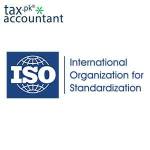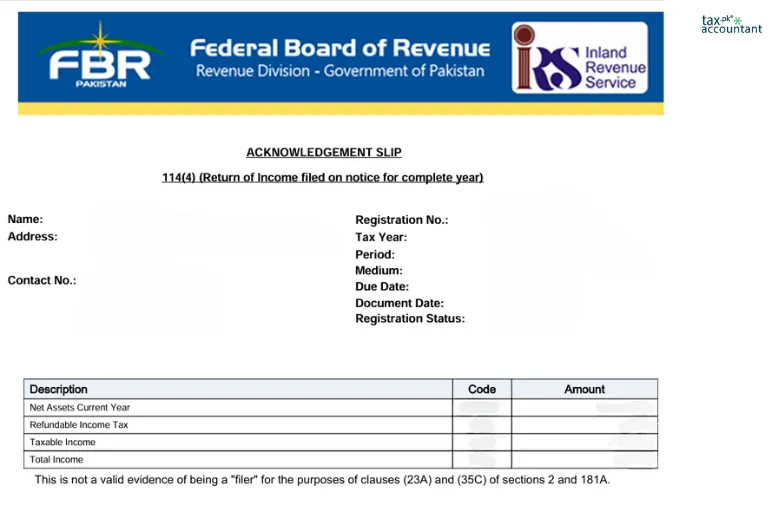
The Memorandum of Association (MoA) is a fundamental document required for the incorporation of a company in Pakistan. It serves as the company’s constitution, outlining its objectives, structure, and operational guidelines.
Understanding the MoA is crucial for entrepreneurs and business owners as it lays the foundation for legal compliance and operational integrity.
Importance of the Memorandum of Association
The MoA is not just a formality; it is a critical legal document that defines the scope of a company’s activities. It delineates what the company can and cannot do, thereby protecting both the company and its shareholders from legal repercussions. In essence, the MoA acts as a guiding framework for the company’s operations.
Legal Framework
In Pakistan, the Companies Act 2017 governs the formation and operation of companies. The MoA must be filed with the Securities and Exchange Commission of Pakistan (SECP) during the registration process. This document must adhere to specific requirements outlined in the Companies Act to ensure its validity.
Key Components of the Memorandum of Association
The MoA typically comprises five essential clauses:
1. Name Clause
The name clause specifies the company’s official name and its legal structure, such as whether it is a Single Member Company (SMC), Private Limited, or Public Limited. The name must be unique and not similar to any existing company to avoid confusion.
2. Registered Office Clause
This clause indicates the location of the company’s registered office. It should specify not just the city but also the province or capital territory to comply with legal requirements. This ensures that any legal documents can be served at a known address.
3. Object Clause
The object clause is arguably the most critical part of the MoA. It outlines the primary business activities that the company intends to undertake. This clause must be carefully drafted because any activities outside this scope may be deemed ultra vires (beyond powers) and could lead to legal challenges.
4. Liability Clause
This clause defines the extent of liability for members in case of winding up or closure of the company. In most cases, companies are formed with limited liability, meaning shareholders are only liable for unpaid shares.
5. Capital Clause
The capital clause declares the total authorized capital of the company and details about share denominations. This information is crucial as it determines how much capital can be raised through shares.
Differences Between Memorandum of Association and Articles of Association
While both documents are essential for company registration, they serve different purposes:
| Feature | Memorandum of Association | Articles of Association |
|---|---|---|
| Purpose | Defines scope and objectives | Governs internal management |
| Legal Status | Must be filed with SECP | Not required to be filed but must comply with MoA |
| Content | High-level overview | Detailed operational rules |
| Amendment Process | Requires formal approval from SECP | Can often be amended by board resolution |
Drafting a Memorandum of Association
Creating an effective MoA requires careful consideration and precision. Here are some tips for drafting:
- Clarity: Use clear and unambiguous language to avoid misinterpretations.
- Compliance: Ensure that all clauses comply with the Companies Act 2017.
- Flexibility: While being specific, allow for some flexibility in business activities to adapt to future changes or expansions.
- Legal Review: It’s advisable to have a legal expert review your MoA before submission to ensure all legal requirements are met.
Filing Process with SECP
To incorporate a company in Pakistan, you must follow these steps:
- Name Reservation: Submit an application for name reservation through SECP’s online portal.
- Preparation of Documents: Prepare your MoA along with other required documents such as Articles of Association.
- Submission: File your application for incorporation along with your MoA and Articles with SECP.
- Approval: Once approved, you will receive a certificate of incorporation, officially recognizing your company.
Common Mistakes to Avoid
When preparing your MoA, avoid these common pitfalls:
- Vague Objectives: Ensure that your object clause clearly defines your business activities.
- Ignoring Legal Requirements: Familiarize yourself with all legal stipulations under the Companies Act 2017.
- Inadequate Capital Clause: Clearly state your authorized capital to avoid issues in fundraising later on.
The Memorandum of Association is an indispensable document for anyone looking to establish a business in Pakistan. By clearly defining your company’s name, registered office, objectives, liabilities, and capital structure, you create a solid foundation for your business operations.
What are the key differences between the Memorandum of Association and the Articles of Association Pro Search?
The Memorandum of Association (MoA) and the Articles of Association (AoA) are two foundational documents essential for the incorporation and governance of a company. While both serve critical roles, they differ significantly in purpose, content, and legal implications. Understanding these differences is crucial for anyone involved in corporate governance or business formation.
Nature and Purpose
Memorandum of Association
The MoA serves as the company’s charter. It outlines the fundamental objectives and scope of the company’s operations. Key aspects include:
- Company Name: The official name under which the company will operate.
- Registered Office: The physical location where the company is based.
- Objectives: A clear statement of the business activities the company intends to pursue.
- Liability Clause: Specifies the extent of liability for shareholders.
- Capital Clause: Details regarding the authorized share capital of the company.
Articles of Association
In contrast, the AoA focuses on internal governance. It provides detailed rules and regulations for managing the company’s affairs, including:
- Management Structure: Defines roles and responsibilities of directors and officers.
- Shareholder Rights: Outlines voting rights, dividend distribution, and other shareholder privileges.
- Meeting Procedures: Sets rules for conducting meetings and decision-making processes.
Scope
| Feature | Memorandum of Association | Articles of Association |
|---|---|---|
| Focus | External objectives and relationships | Internal management and operational rules |
| Content | High-level overview | Detailed operational guidelines |
Legal Status and Binding Nature
Memorandum of Association
The MoA is a public document that binds the company to its stated objectives. Any action taken outside its scope is considered ultra vires (beyond powers) and can be deemed void. This protects stakeholders by ensuring that the company operates within its defined limits.
Articles of Association
The AoA primarily governs relationships among internal parties (directors, shareholders). While it is essential for internal management, it does not bind external stakeholders in the same way as the MoA. The AoA can be amended more easily than the MoA, allowing companies to adapt their internal rules without extensive formalities.
Alteration Process
- Memorandum of Association: Changes to the MoA require a special resolution passed by shareholders and approval from regulatory authorities. This stringent process ensures that any significant alterations align with shareholder interests.
- Articles of Association: Amendments can be made through an ordinary resolution during a general meeting, allowing for more flexibility in adapting internal governance structures.
Relationship with Shareholders
Memorandum of Association
The MoA establishes a contractual relationship between the company and its shareholders based on its objectives. Shareholders invest in a company with an understanding of its purpose as defined in this document.
Articles of Association
The AoA regulates how this relationship operates on a day-to-day basis. It details shareholders’ rights, responsibilities, and procedures for decision-making, thereby ensuring smooth internal operations.
Public Accessibility
- Memorandum of Association: This document is publicly accessible, allowing potential investors, partners, and stakeholders to review a company’s foundational details and objectives.
- Articles of Association: Typically not required to be publicly disclosed; they remain an internal document shared mainly with relevant stakeholders like shareholders and directors.
In summary, while both the Memorandum of Association and Articles of Association are vital for a company’s formation and governance, they serve distinct purposes:
- The MoA outlines what a company can do (its objectives) and binds it to external stakeholders.
- The AoA governs how a company operates internally, detailing management structures and shareholder relations.
Understanding these differences is crucial for effective corporate governance and compliance with legal requirements in Pakistan or any jurisdiction where these documents are mandated.
How do the objectives outlined in the Memorandum of Association influence a company’s operations?
The Memorandum of Association (MoA) is a crucial document for any company, serving as its foundational charter. Among its various components, the objectives clause plays a particularly significant role in shaping a company’s operations.
Below we will explore how the objectives outlined in the MoA influence various aspects of a company’s functioning, from strategic decisions to legal compliance.
Understanding the Memorandum of Association
The MoA is a legal document that defines a company’s scope, powers, and objectives. It comprises several clauses, with the object clause detailing the specific activities the company intends to undertake.
This clause not only outlines what the company can do but also implicitly indicates what it cannot do, thereby establishing operational boundaries.
Key Influences of Objectives on Company Operations
1. Defining Business Scope
The objectives specified in the MoA clearly delineate the scope of business activities. This clarity helps:
- Strategic Planning: Management can align its strategic goals with the defined objectives, ensuring that all business initiatives are within legal boundaries.
- Resource Allocation: By understanding the scope of operations, companies can allocate resources effectively to areas that align with their stated objectives.
- Market Positioning: The objectives guide how a company positions itself in the market, influencing branding and marketing strategies.
2. Legal Compliance
The MoA serves as a binding document that governs a company’s actions. The objectives outlined therein have significant legal implications:
- Regulatory Adherence: Companies must operate within the confines of their MoA. Engaging in activities outside these objectives could lead to legal challenges and penalties.
- Protection for Stakeholders: The MoA protects shareholders and creditors by ensuring that the company does not engage in unauthorized activities, thereby safeguarding their interests.
- Basis for Legal Actions: If a company acts beyond its stated objectives, stakeholders can challenge such actions in court, reinforcing compliance with the MoA.
3. Attracting Investment
The clarity provided by the objectives in the MoA is vital for attracting potential investors:
- Investor Confidence: Investors are more likely to invest in companies with clearly defined objectives as they can assess risks and opportunities associated with those activities.
- Funding Opportunities: Specific objectives can open avenues for targeted funding or partnerships aligned with those goals, enhancing growth prospects.
- Due Diligence: Investors often conduct due diligence based on the MoA to ensure that their investment aligns with the company’s stated purpose and operational scope.
4. Guiding Internal Governance
The objectives outlined in the MoA also influence internal governance structures:
- Decision-Making Framework: The management team uses the objectives as a framework for making strategic decisions, ensuring alignment with long-term goals.
- Performance Metrics: Companies can develop performance metrics based on their objectives, facilitating effective monitoring and evaluation of business operations.
- Employee Alignment: Clearly defined objectives help employees understand their roles within the broader context of the company’s mission, fostering alignment and motivation.
5. Facilitating Amendments and Growth
While the MoA sets initial boundaries for operations, it also allows for adaptability:
- Amendment Process: Companies can amend their MoA to reflect new objectives or changes in business strategy. This flexibility is crucial for growth and adaptation to market conditions.
- Expansion Opportunities: As companies evolve, they may identify new opportunities that align with their core competencies but were not initially included in their MoA. Amending these objectives allows them to pursue such opportunities legally.
The objectives outlined in the Memorandum of Association are more than just formalities; they are foundational elements that significantly influence a company’s operations. From defining business scope and ensuring legal compliance to attracting investment and guiding internal governance, these objectives play a pivotal role in shaping how a company functions and grows.
About Umair A R Mughal
Umair A R Mughal is a unique professional who seamlessly blends the worlds of technology, finance, and regulatory compliance. With a solid foundation as a Chartered Accountant and a passion for technology, Umair offers comprehensive solutions that cater to the evolving needs of businesses in Pakistan.
View all posts by Umair A R Mughal


















8 thoughts on “What is a Memorandum of Association in Pakistan?”
Spot on with this write-up, I actually believe that
this website needs a lot more attention. I’ll
probably be back again to read through more, thanks for the information!